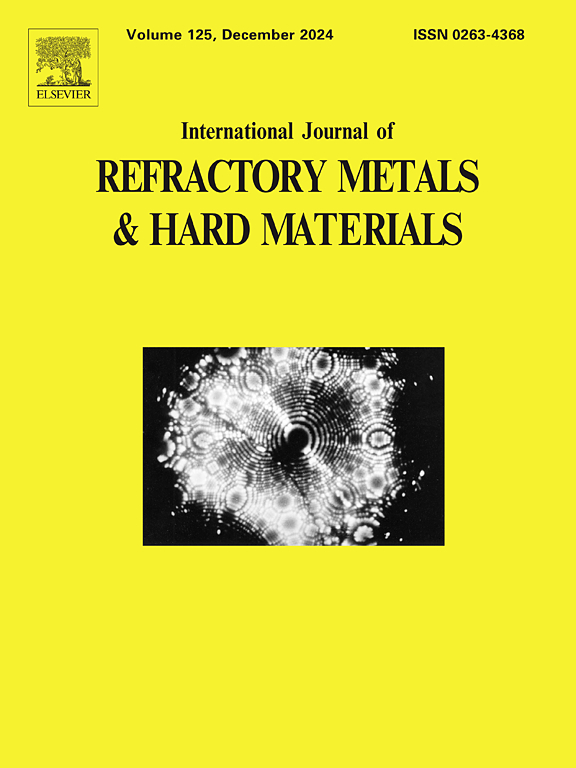High-pressure infiltration fabrication of WC-based self-lubricating ceramics with synergistic enhancement of mechanical and lubrication properties
IF 4.2
2区 材料科学
Q2 MATERIALS SCIENCE, MULTIDISCIPLINARY
International Journal of Refractory Metals & Hard Materials
Pub Date : 2025-02-02
DOI:10.1016/j.ijrmhm.2025.107089
引用次数: 0
Abstract
The mechanical performance defects of self-lubricating ceramics bottleneck restricting their development and application. Such a defect is attributed to the lubricant's hindering effect on the substrate's bonding during the sintering process. Here, we report a high-pressure infiltration scheme and present a two-step approach for preparing WC-based self-lubricating ceramics with excellent mechanical and lubrication properties. We have demonstrated that the process breaks through the limitations between mechanical and lubrication properties to improve the wear resistance of the ceramics significantly. The effects of residual stresses due to lubricating phases and the complex three-dimensional pore structure within the ceramics deserve extensive discussion. A multiple lubrication mechanism involving multiple particles is proposed based on frictional wear analysis. This straightforward strategy opens a gate to developing the next generation of self-lubricating ceramic materials.

具有协同增强力学和润滑性能的wc基自润滑陶瓷的高压渗透制备
自润滑陶瓷的力学性能缺陷是制约其发展和应用的瓶颈。这种缺陷是由于在烧结过程中润滑剂对基体结合的阻碍作用造成的。在这里,我们报告了一种高压渗透方案,并提出了两步法制备具有优异机械和润滑性能的wc基自润滑陶瓷。我们已经证明,该工艺突破了机械性能和润滑性能之间的限制,显著提高了陶瓷的耐磨性。润滑相的残余应力和陶瓷内部复杂的三维孔隙结构的影响值得广泛讨论。基于摩擦磨损分析,提出了一种涉及多颗粒的多重润滑机制。这种直截了当的策略为开发下一代自润滑陶瓷材料打开了大门。
本文章由计算机程序翻译,如有差异,请以英文原文为准。
求助全文
约1分钟内获得全文
求助全文
来源期刊
CiteScore
7.00
自引率
13.90%
发文量
236
审稿时长
35 days
期刊介绍:
The International Journal of Refractory Metals and Hard Materials (IJRMHM) publishes original research articles concerned with all aspects of refractory metals and hard materials. Refractory metals are defined as metals with melting points higher than 1800 °C. These are tungsten, molybdenum, chromium, tantalum, niobium, hafnium, and rhenium, as well as many compounds and alloys based thereupon. Hard materials that are included in the scope of this journal are defined as materials with hardness values higher than 1000 kg/mm2, primarily intended for applications as manufacturing tools or wear resistant components in mechanical systems. Thus they encompass carbides, nitrides and borides of metals, and related compounds. A special focus of this journal is put on the family of hardmetals, which is also known as cemented tungsten carbide, and cermets which are based on titanium carbide and carbonitrides with or without a metal binder. Ceramics and superhard materials including diamond and cubic boron nitride may also be accepted provided the subject material is presented as hard materials as defined above.

 求助内容:
求助内容: 应助结果提醒方式:
应助结果提醒方式:


